It would have come as no surprise to Trinidad and Tobago Football Association (TTFA) Technical Director Anton Corneal that Trinidad and Tobago’s hopes of going to the Under-20 Women’s World Cup came crashing down yesterday evening.
Having lost 2-3 to Haiti in their opening CONCACAF qualifier at the Ato Boldon Stadium in Couva on Thursday, the Junior Women Soca Warriors could not get the positive result they needed against Group A favourites Canada, who beat them 4-1 in yesterday’s second outing.
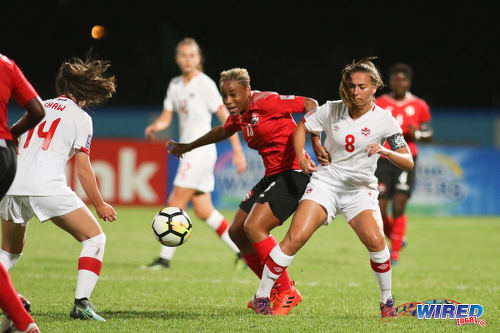
(Courtesy Chevaughn Christopher/Wired868)
Corneal suggested to Wired868 in an interview between both games that Trinidad and Tobago has been hoping for magic. In vain.
“There is no magic formula; it is only work,” he stressed. “It is time spent on the ball, it is time spent playing games and getting exposure over and over so we could develop all areas of the game. Not just technically and tactically but the mental and physical side of the game also.”
Convinced that the country’s football administrators must be able to move past the mentality of playing from tournament to tournament and map out a long-term development plan for young players, Corneal says that he shares his vision for the game nationally with the relevant coaches—including the ones handling the Under-20 Women.
“I’m in constant discussion with the coaches, especially of the Under-20 team,” Corneal said. “We have had discussions. And right after the game [against Haiti], we had a chat about development. One team was more ready and we discussed why…”
“After [watching] the game [against Haiti],” he added, pointing to the tactical and technical superiority Haiti displayed in the Thursday game, “I thought there were areas that we needed to address and areas which should have been addressed four years ago.”
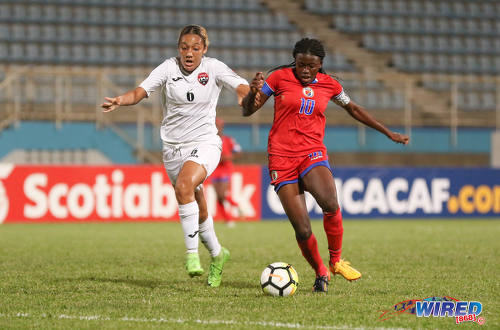
(Courtesy Sean Morrison/Wired868)
Although coach Jamaal Shabazz’s charges stormed into a 2-0 lead after only ten minutes against Haiti and again scored in the opening minutes in yesterday’s game against Canada, they never got their passes together in midfield and were guilty of too many errant long balls.
So is there a certain style of football the TD would like to see played consistently in the girls’ football programme? And is there a shared vision?
The only way the two-island republic can maximize the full potential of its burgeoning football talents, the TD is quite certain, is through years of sacrifice, coaching, scouting and diligent work on the training field. Merely continuing to focus on competitions and tournaments, he emphasizes, simply will not get us where we want to be.
“It’s about total development and understanding the game properly,” said Corneal. “It’s about covering the four components of the game, the technique, tactics and mental and physical aspects of the game. And as we grow and we start seeing our strengths and weaknesses and what players we have available to us, then we can decide what’s the best way for us to play to maximize our strengths.”
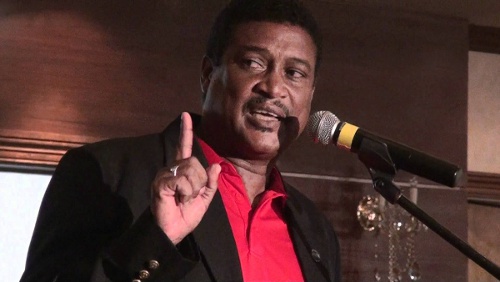
Corneal pointed out that the Haitian team, now under the watchful eyes of former France youth team coach Marc Collat, have had years of continuous planning and preparation through their Goal Project.
Reiterating his belief that the key period in a player’s development is during the five years from age 12 to 16, the Technical Director suggests that the TTFA would do well to try and emulate their Caribbean counterparts.
“There is some room for growth and growth which has to be done right away […] in order to close the gap,” he said. “We have to realize the importance of what we do outside of tournaments and not just (when we are in) tournament mode.
“When we are out of a tournament, there is so much work to be done after a tournament […]. I think [that game] gave us a clear idea into the type of preparation that a team like Haiti would have done and why they are now reaping the rewards.”
He zeroed in on where he thought the real problem lay.
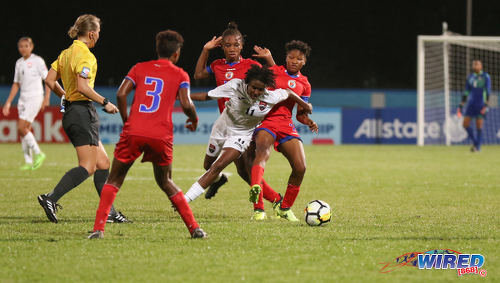
(Courtesy Sean Morrison/Wired868)
“Anytime you address the Under-20 team, we are really looking at a development process from five to six years before,” he explained. “And that’s the golden learning age of a player, from 12 to 16 years old. If we don’t address it properly there, we will not get the players to their true potential. And that affected us and I think it will continue to affect us.
“We first have to decide how much we are willing to sacrifice when the players are younger and [recognize] the type of work that needs to be done, the concentrated type of work that needs to be done.”
There are two 16-year-olds in the current Under-20 set-up in the persons of defender Nathifa Hackshaw and lively attacker Aaliyah Prince. Only two years ago, both girls were members of a Trinidad and Tobago team which went to the CONCACAF Under-15 Championship in Orlando.
How does Corneal think these girls have adapted themselves to the demands of Under-20 football?
“I am not one of the staff members on the team so to make a comment like that will be ill-advised of me,” Corneal told Wired868. “What I could say is that I’m happy certain players were able to close the gap from the Under-17s to Under-20s. It’s good when you see a few players could do it […]
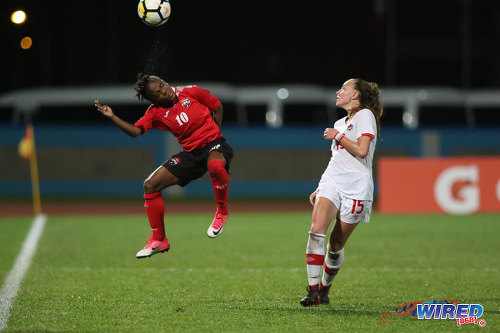
(Courtesy Chevaughn Christopher/Wired868)
“Our way of addressing this is the National Elite Youth Program with 12-, 13- and 14-year-old girls from all the zones coming together to do a little more concentrated work so we could address these problems now.”
There is already a girls’ National Elite Youth Program (NEYP), which has Marlon Charles—Shabazz’s Under-20 team assistant—as head coach and Trinidad and Tobago Women’s Senior Team winger Ahkeela Mollon as one of its coaches. Corneal says that the response to the NEYP has been decent up to now but he would still like to see a strengthening of the player involvement on the girls’ side of things.
“I’ll be guessing here but the Elite Youth Program will have about 50 to 60 players coming out from the zones,” he said. “The zones fluctuate with the number of players and the age-group fluctuates [as well] because, as I said, we don’t have a lot of girls playing.”
So is there a plan to address this, to get more girls involved in football from the grassroots level right up to national team level?
“One of the ways we have been doing it is in the primary schools,” said Corneal. “There is a grassroots programme that is going to be done every Wednesday where we will try to target as many as 2,000 kids between the ages of nine and ten. We have made it compulsory that half must be boys and half must be girls.
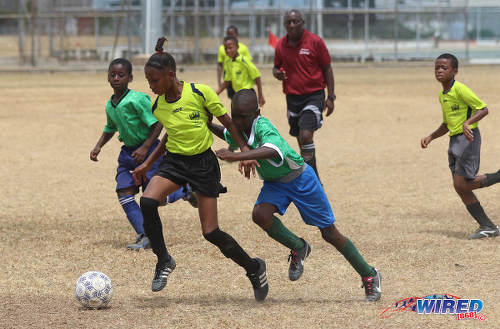
(Courtesy Sean Morrison/Wired868)
“Let’s grow the number of young girls playing the game and, hopefully through the primary schools, we will get a growth right there.”
The Senior Women’s Team narrowly missed out on qualification for the 2015 Women’s World Cup after falling to Ecuador in a play-off on home soil. Now, another Women’s World Cup is just one year away. Is there any plan to phase new players into the team so that there will be no problem when some of the core players withdraw from international duty?
Corneal recalled that years of persistent attention and scrutiny had gone into the development of key players such as Mollon, Maylee Attin-Johnson, Kennya Cordner and Tasha St Louis.
“We have some girls coming through but of course I would like it to be more,” Corneal said. “That era of players, they were part of good long-term development. A lot of time was put in with those players many years ago and a lot of them blossomed to become quite competent players.
“We just have to make sure that we put in that development to make sure that we have players continuously going through the programme and we would be able to get them to their fullest potential.”
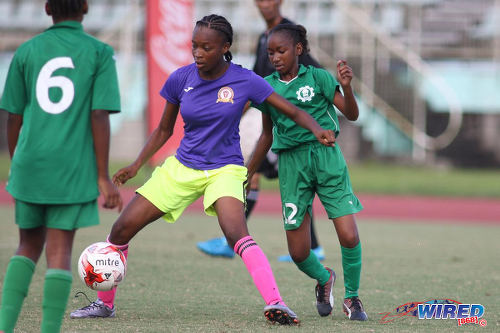
(Courtesy Chevaughn Christopher/Wired868)
He suggested that there was some confusion about what the real goals of the different age-group programmes are.
“You are not producing a player for the Under-17 or Under-20 level,” he said, “you are producing a national player. You are aiming to produce a national senior player and he or she should be able to produce for many years.”
The National Elite Young Program aside, Corneal reckons that the TTFA plans for additional training pitches and dormitories at the Ato Boldon Stadium site put the country on the right path to future player development.
“We could have more than one national youth team […] or more than one elite team training on the day,” Corneal said. “That can be our way of bringing them together and this goes for both girls and boys. […] That is something we probably should have had 15 years ago. But everything happens in its time.
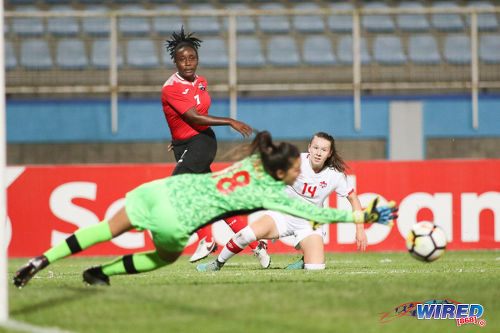
(Courtesy Chevaughn Christopher/Wired868)
“It takes patience and it takes planning. Or it takes planning and it takes patience. We are working on a plan and we have to wait and see what will happen in the next three to four years.”
 Wired868 Wired868 for smart sport news and opinion
Wired868 Wired868 for smart sport news and opinion

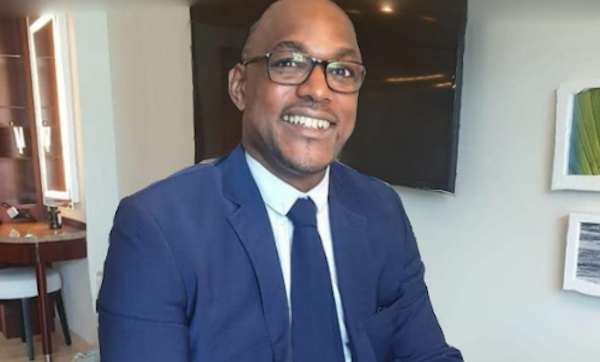


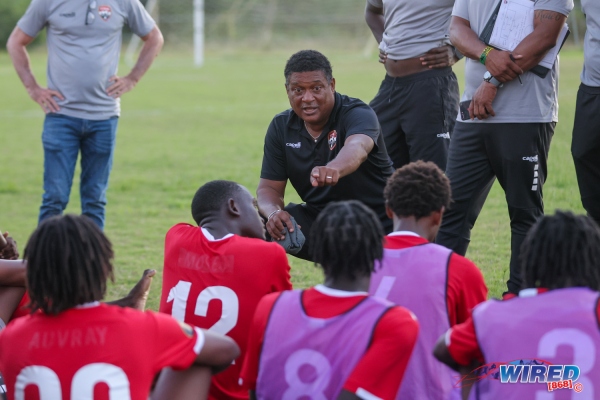
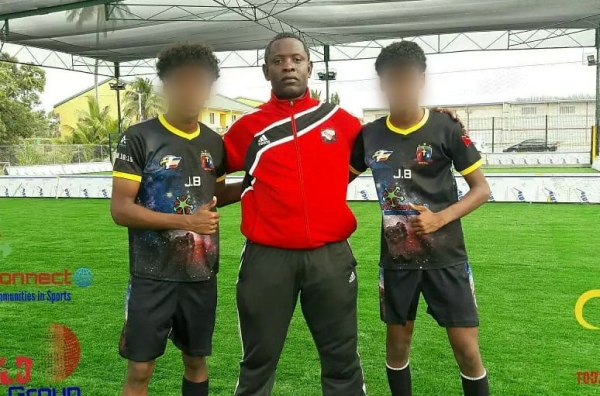
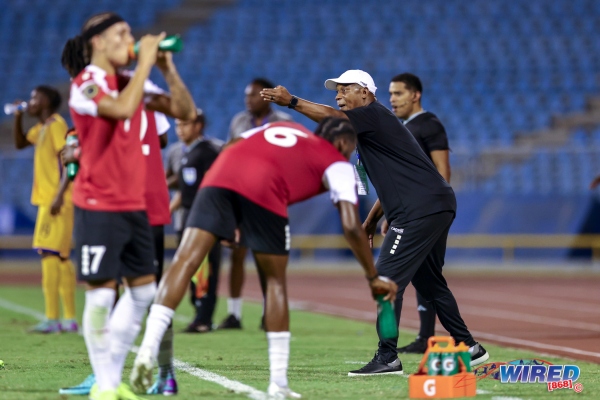


Every tournament we go to and fail too qualify we have to learn from our mistakes. Endurance conditionings have been our problem for how long now.
Chloe Paul so you are telling me that Shabazz did not go for broke.Then why is he the coach.
How much notice did we get to prepare for this tournament????

At least a year, maybe more. Because we are hosts on top of everything else.
Gentlemen, I read through every comment here and may I say, many were of 1. a high and insightful caliber, and 2. show that the leaders of the football Association ought to know that, “no wool go get pulled over people eyes as easy as before” – well done and thank you all. I especially identified with comments made from, Brain Harry, Roger Prince, Trevor Bridgelalsingh, Earl Best, and Sean Powder. The responses (R), that the TD gave, the conclusions (C) that he drew, and the recommendations (R) he made, seem to belong to someone who just arrived from another country, totally removed from everything and only now observing the proceedings and pieces. These RCRs from the TD, do not belong to or, ought not to have been allowed to be ushered by a decades-old and several-times TD and, every-level national coach, not to forget, a well-celebrated college and national team player as well. Lasana, beautifully contested with your 10 of 100% success referencing – bars shall never be lowered in order to generate a sense of success; participation trophies flank many-a-wall.
Very well said, we have to learn from our mistakes,and move on, what we need is more matches and endurance conditioning, not negative remarks.
They Failed and the Failure started within the Home and if not addressed it will continue year in and year out. The Men teams are the same with lack of fitness and discipline. The game is approximately 100 mins and you cannot even play 40 mins of high intensity football?
What do you play? Computer games.
Hahaha. You have chats Chloe! Lol
They did not fail.Making those statements to young people kills the spirit. Endurance and killer instinct has to be worked on.When you can accept defeat and still kick back you are deserving of the prize and you have matured. Thanks Coach Shabazz and the young ladies.Go for broke next time.
So if your son got 10 percent in his exams you would tell him he succeeded?
I think artificially lowering standards so they don’t feel bad is just as dangerous as being critical. Or worse.
But of course a setback at 18 or 19 years old is certainly not the end of the world.
Change the strategy. Could me a multitude of reasons.
Chloe, I think there is a typo in the second sentence. I don’t follow.
More doing. Less talking
I have to laugh …the people in charge not in charge
These people have been in charge for 20+ years talking the same things and delivering the same results-FAILURE at every level and form of the game.. go back and review their many interviews over the years journalists
These are the same people who felt that teams did not need specialist physical trainer as coaches were capable.. I saw them them with my own eyes attempt sessions and it was absolute failure.. to date I still work with footballers from national teams to club teams and they’re way sub zero
There is obviously a disconnect between the President. TD and coaches. The application, energy, resources and hype during preparation solely for tournaments clearly has not worked for us and clearer more comprehensive approach must be adopted. We have the talent but unfortunately not the mindset and culture which supports or facilities international athletes.
Whatever he says is hollow! He’s been a part of the infrastructure for quite a while. Our football is suffering from a lack of leadership and vision at the highs levels. If those were present, then good stewardship can cascade them down onto the field. As technical director let him outline the development plans he’s put into place. Let him detail the outcome of the consultations he’s held with coaches at all levels and what our style and play should look like. He needs to retreat to a quiet place. And he should take all the TTFA with him.
Trinidad qualified for 2 youth World Cups consecutively…I believe Anton was at the forefront of those campaigns – Zoran Vranes was the coach if I’m not mistaken….
Anthony Sherwood so what? The fact is that he’s a member of the senior executive. In management there’s something called collective responsibility. He cannot not take some responsibility for where we are. He cannot speak as though it’s the TTFA and not him. He cannot!
And there was no continuity after qualifying for either.
..The lines bro. Read between the lines..
I can not understand how Mr. Corneal, our current TD can speak of technical, tactical, emotional and physical development of our players in such an abstract and almost disconnected manner. Having spoken to Anton on several occasions, he is knowledgeable and competent to develop and implement program’s however the comments here suggest that he has no control over the technical development of the TTFA.
I don’t think Haiti was superior to our girls but they wanted it more. Was a good game
Sorry boss, I’m not sure what game you were watching. They were clearly superior
By far.. the Trinbago keeper in a large way helped to keep it respectable
We played football for 10-15 minutes, then the Haitians took over.
The #10 that scored the hattrick cud hav scored 5 comfortably….
The were faster naturally..and faster to react to second balls….
They were sharper on and off the ball…
Nigel Myers correct….. that is all their physical conditioning allows. Unfortunately today it would be less having to play a third game in five days
I agree with him
..Not only that. What brings a plan to life is people. And those people need an effective structure within which to operate. TTFA does not have a texhnical structure. And certainly not one that encompasses technical operations throughout the country. You know what? Money spent on this tournament would have been better spent on ensuring we do have a national technical structure that is geared towards the development of the game. This thing requires far more than a TD with some ideas..
100% spot on…
Is the plan being implemented documented anywhere? Is it a static or dynamic plan, open to periodic review and correction, if necessary? How does one track to plan milestones in the short, medium and long term? Lots more questions I can come up with, but let’s start there…
This is Trinidad, brother. A plan does not need to have any more substance than an election manifesto…until, of course, election time rolls around again.
..Yes. This is the theory. For the referees, the head of the refereeing department is supposed to be the lead. The PRACTICE is, shall we say, somewhat DIFFERENT?..
Lasana Liburd right, so by FIFA’s definition soldier have some reflection to do.
However our standards are nowhere near international standards, so maybe TTFA TD has some different bullet points.
“The technical director, sometimes also
called a director of technical development
or a sports director, is the person in charge
of defining and leading the national
technical development programmes,
therefore preparing the football of
the future. He proposes to the general
secretary, the president and possibly the
executive committee (ExCo) a long-term
vision and develops a technical strategy
over several years in order to improve the
level of the game within the country and
achieve identified targets on and off the
pitch. He and his departement are likewise
in charge of the implementation of all
activities related to technical development,
as well as the control, monitoring and
assessment. In other words, he is for the
technical side what the general secretary is
for the management side…”
http://resources.fifa.com/mm/document/footballdevelopment/technicalsupport/02/84/00/08/fifa_td_2016_e_low_neutral.pdf
This is the short version according to FIFA:
“The Technical Director is in charge of defining and leading the national technical development programmes, and developing long-term strategies in this regard for all aspects of the game, be it grassroots, women’s football, coach education or youth football, and to bring them together in synergy according to the development pyramid.”
Uhmm, maybe i dont know any better, could you put your hands on the roles and responisibilities/duties of the TD in the TTFA?. Because alot of the stuff he laments lacking, i would’ve thought are his responsibility.
..Finally. An honest man in TTFA. (I did not know he is the TD. When was Isa replaced?). He refers to plans and programmes. Anton has the general idea. He needs decision makers who understand the need to facilitate progressive ideas..
And, this is the problem. For a number of years there have been some saying the right things. But, when we have those at the helm only listening to themselves, we’ll continue to spin top in mud. We have thoughts, words, but no action that reflects the thought and words.
..Exactly..
Keith Look Loy, Anton was hired as technical director. Isa has another title.
..OK. I see..
Lasana Liburd Issa is director of football….
..And the difference between the TD and the Director of Football is? .
I thought maybe you would have the answer to that one Keith….
..ME!! No bro. Me eh know. My guess would that one job is mandated and defined by FIFA while the other is a sinecure?..
It’s conveniently honest. He’s ready to jump ship or run for office. He’s been a part of the set up for a long time!